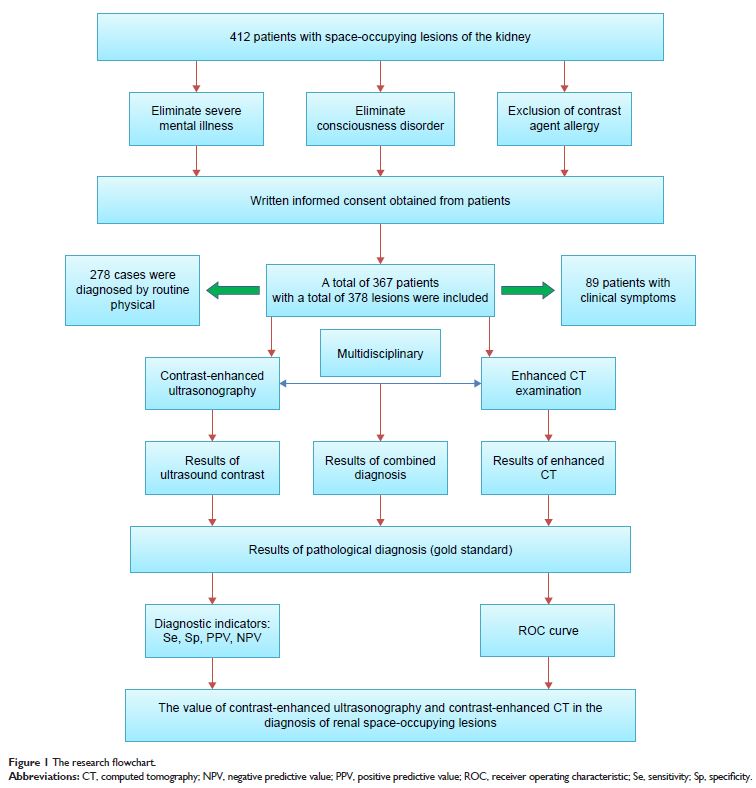108384
论文已发表
注册即可获取德孚的最新动态
IF 收录期刊
- 3.4 Breast Cancer (Dove Med Press)
- 3.2 Clin Epidemiol
- 2.6 Cancer Manag Res
- 2.9 Infect Drug Resist
- 3.7 Clin Interv Aging
- 5.1 Drug Des Dev Ther
- 3.1 Int J Chronic Obstr
- 6.6 Int J Nanomed
- 2.6 Int J Women's Health
- 2.9 Neuropsych Dis Treat
- 2.8 OncoTargets Ther
- 2.0 Patient Prefer Adher
- 2.2 Ther Clin Risk Manag
- 2.5 J Pain Res
- 3.0 Diabet Metab Synd Ob
- 3.2 Psychol Res Behav Ma
- 3.4 Nat Sci Sleep
- 1.8 Pharmgenomics Pers Med
- 2.0 Risk Manag Healthc Policy
- 4.1 J Inflamm Res
- 2.0 Int J Gen Med
- 3.4 J Hepatocell Carcinoma
- 3.0 J Asthma Allergy
- 2.2 Clin Cosmet Investig Dermatol
- 2.4 J Multidiscip Healthc

对比增强超声与对比增强计算机断层扫描相结合在肾脏占位性病变临床诊断中的价值评估
Authors Tian W, Lu JB, Jiao D, Cong ZB
Received 23 February 2017
Accepted for publication 28 April 2017
Published 14 July 2017 Volume 2017:10 Pages 3493—3499
DOI https://doi.org/10.2147/OTT.S135500
Checked for plagiarism Yes
Review by Single-blind
Peer reviewers approved by Dr Narasimha Reddy Parine
Peer reviewer comments 2
Editor who approved publication: Dr Tohru Yamada
Background: There are a variety of space-occupying lesions of the kidney, and
the benign lesions may be difficult to differentiate from the malignant ones.
Therefore, an accurate judgment of the benign and malignant nature of the
space-occupying lesions of the kidney is of high importance for the treatment
and prognosis of these patients.
Objective: To evaluate the diagnostic value of contrast-enhanced
ultrasound (CEUS) combined with contrast-enhanced computed tomography (CECT) in
space-occupying lesions of the kidney.
Data and methods: Three hundred and sixty-seven patients with
space-occupying lesions of the kidney (378 lesions) were examined by CEUS and
CECT, respectively, then, a combined diagnosis was made after the combination
of CEUS and CECT by a multidisciplinary team. The diagnoses from the three
methods were compared. The pathological results were taken as the gold
standard. The sensitivity, specificity, positive and negative predictive values
and area under the receiver operating characteristic (ROC) curve were
calculated for the three methods. Thus, the diagnostic value of the three
methods was assessed.
Results: Of the 378 lesions examined, there were 301
malignant lesions and 77 benign lesions. The combined examination revealed 303
malignant lesions, with 9 benign lesions mistakenly diagnosed as malignant
ones; thus, the misdiagnosis rate was 11.7%. By using the combined examination,
75 benign lesions were diagnosed, with the missed diagnosis of 7 malignant
lesions, so the missed diagnosis rate was 2.3%. The sensitivity, specificity,
positive and negative predictive values and area under the ROC curve with the
combined examination of CEUS and CECT were 97.67% (0.950–0.989), 88.31%
(0.785–0.942), 97.03% (0.942–0.985), 90.67% (0.811–0.958) and 0.930
(0.887–0.973), respectively. As compared with either CEUS or CECT alone, the
difference in these indicators was of statistical significance (P <0.05). The combined
examination greatly improved the sensitivity, specificity and accuracy of the
diagnosis of the space-occupying lesions of the kidney.
Conclusion: CEUS and CECT each have advantages and
disadvantages in the diagnosis of the space-occupying lesions of the kidney.
The two techniques can be used in combination to compensate for the respective
defects. More salient benefits can be reaped from the combined examination than
from either technique used alone.
Keywords: space-occupying
lesions of the kidney, CEUS, CECT, combined diagnosis
